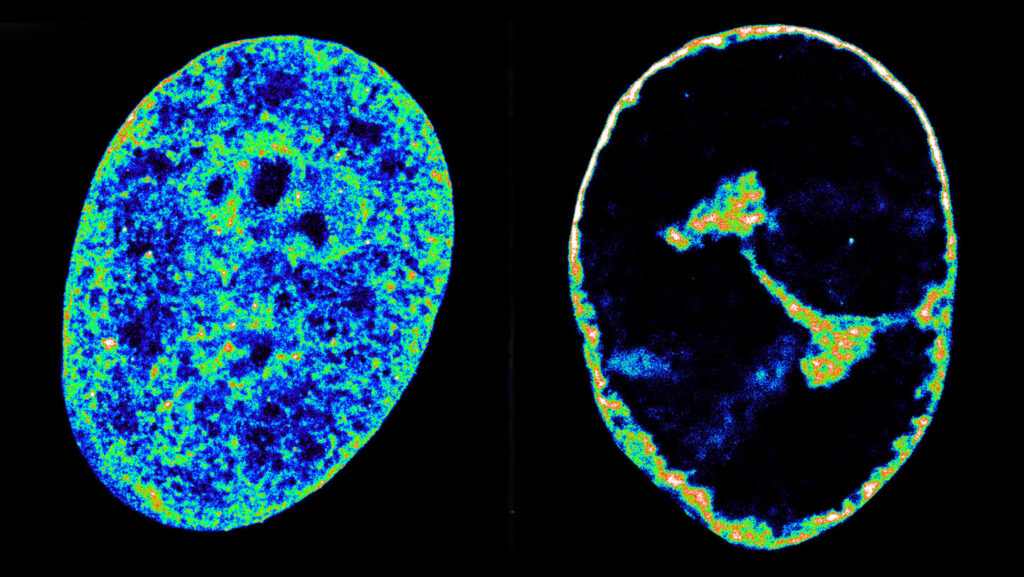The herpesvirus can manipulate our DNA with far more precision than previously thought.
The virus condenses and changes the shape of our genetic material to hijack the host genes needed for replication, researchers report June 19 in Nature Communications. The study is the first to leverage new, cutting-edge visualization tools to understand how this process occurs, offering a clear view of cellular changes within hours of infection.
Herpes simplex virus (HSV-1), the microbial culprit behind oral herpes, infects up to 67 percent of adults under 50 worldwide, although most cases are asymptomatic. Like all viruses, HSV-1 requires a host to replicate, transforming each cell it enters into a virus-producing factory.
Scientists have observed that when HSV-1 infects our cells, our chromosomes begin to warp and condense, shifting to the periphery of the nucleus to make space for the virus’s many copies. It has been unclear whether this process is intentional or simply a by-product of the virus’s invasion. “We’ve never had the technology to image cells at a fine enough resolution to look closer,” says Maria Pia Cosma, a synthetic biologist at the Centre for Genomic Regulation in Barcelona.
Advances in super-resolution microscopy have now made this possible. Cosma and her colleagues were able to image cells up to eight hours post-infection, including structures just 20 nanometers wide.
The scientists found that within an hour of infection, HSV-1 co-opts two genes — RNA polymerase II (RNAP 2) and DNA topoisomerase (TOP1) — that compact the host’s chromatin into super-dense bundles. Chromatin is the DNA-protein complex that, when condensed, forms our chromosomes. The virus then reshapes the architecture of the chromatin, similar to folding origami, to bring itself into contact with loops of DNA containing the host genes needed for viral replication.
When the researchers blocked the expression of TOP1, that stopped the virus from infecting cells altogether, suggesting a potential antiviral application. While TOP inhibitors are being developed, none are for HSV-1. Cosma notes that there could be unintended off-target effects.
“Few groups have attempted to do [what this team has done], and even fewer have done it well,” says Daphne Avgousti, a chromatin virologist at the University of Miami who was not involved in the study. “Using the virus as a tool to understand how chromatin can be altered can open up new research into understanding the complexities of our own genome.”
Cosma says that the interplay between DNA’s structure and its function has become a popular research topic, and the results raise exciting new questions. “You might expect the organization of the host genome to be a complete mess after the compaction — that links between chromosomes might be severed, for example — but that’s not the case,” she says. “This is something that is puzzling me a lot, and I plan to figure out what’s happening there.”
Read the full article here


